Procurement 101: Introduction to the Procurement Process

Table of Contents

The procurement process in manufacturing is incredibly complex and involves numerous steps. Its specifics can vary significantly depending on the business model, production type, and regional business practices, leading to a high degree of uniqueness across industries and companies. Therefore, it’s difficult to discuss the procurement process as a uniform concept.
However, the value of extracting its essence and turning it into usable knowledge should not be underestimated. By understanding challenges in the procurement process and adopting strategic mitigation strategies, companies can position themselves for success now and in the future.
Diving into the Procurement Process:
Here’s a closer look at each of the ten steps in the procurement cycle:
- Need Identification: The first step involves recognizing a requirement within the organization. This could arise from a need for raw materials for production, machinery, or even maintenance services.
- Specification Development: Once the need is identified, detailed specifications for the required goods or services are developed. This includes the quantity, quality standards, and delivery timelines, which are crucial for aligning supplier offerings with company needs.
- Supplier Identification and Research: With specifications in hand, the procurement team searches for potential suppliers. This stage may involve market research, attending trade shows, or using digital platforms to find vendors capable of meeting the defined requirements.
- Solicitation of Bids or Proposals: Manufacturers often solicit bids or proposals from the identified suppliers. This can be done through Request for Proposal (RFP), Request for Quotation (RFQ), or Request for Information (RFI), depending on the complexity and value of the purchase.
- Evaluation and Selection: The received bids or proposals are evaluated based on criteria such as price, quality, delivery schedule, and the supplier’s ability to meet the specifications. This step may also involve negotiations to refine pricing, terms, and conditions.
- Purchase Order Process: Once a supplier is selected, a purchase order (PO) is issued, detailing the agreement between the manufacturer and the supplier. The PO serves as a legally binding document specifying the goods or services, quantities, agreed-upon prices, and payment terms.
- Delivery and Inspection: Upon receiving the ordered goods or services, they are inspected to ensure they meet the specified quality standards and requirements. Any discrepancies or issues are addressed directly with the supplier.
- Invoice Approval and Payment: After confirming the goods or services meet the specifications, the procurement team approves the supplier’s invoice for payment. The payment terms, such as net 30 or net 60 days, are typically agreed upon during the negotiation phase.
- Record Keeping: Accurate records of all procurement transactions, including bids, contracts, purchase orders, and receipts, are maintained for future reference and compliance purposes.
- Supplier Performance Evaluation: Finally, the supplier’s performance is evaluated based on criteria like product quality, delivery punctuality, and responsiveness. This feedback is crucial for future procurement activities and may influence the continuation of the relationship with the supplier.
Challenges in the Procurement Process
Procurement can be rife with disruptions, leading to extended lead times for end customers, reduced profits, and harmed competitive advantage. Here are some of the most common challenges when buying:
Supplier Management: Managing a diverse supplier base can be complex, with challenges ranging from quality control to meeting delivery deadlines. Mismanagement can lead to production delays and increased operational costs.
Cost Control: Fluctuating material costs and unexpected expenses can make it difficult to manage budgets effectively, impacting profitability.
Risk Management: Global supply chains are vulnerable to various risks, including geopolitical tensions, natural disasters, and pandemics, which can lead to supply disruptions.
Technological Integration: Keeping up with digital transformation in procurement processes can be challenging for companies with legacy systems.
Mitigating Procurement Challenges
It is integral to apply best practices throughout the procurement process in order to reduce disruptions and improve the health of the organization. See below for tips to minimize these issues:
Strategic Supplier Relationship Management: Building strong, strategic relationships with key suppliers can enhance collaboration, improve quality, and ensure more reliable supply chains. Regular communication and partnership-building activities can foster mutual understanding and alignment of business goals.
Leveraging Technology: Digital tools and platforms can streamline procurement processes, from supplier selection to order management and payment processing. Technologies like AI and blockchain offer innovative ways to manage contracts, perform risk management, and improve transparency.
Adopting a Total Cost of Ownership (TCO) Approach: Beyond just looking at the purchase price, considering the TCO for procured materials—including shipping, handling, and maintenance costs—can provide a more accurate picture of expenses and help identify areas for cost savings.
Risk Assessment and Contingency Planning: Conducting regular risk assessments and developing contingency plans for critical supply chain disruptions can minimize the impact of unforeseen events.
The Future of Procurement
The future of procurement in manufacturing is poised for significant transformation, driven by technological advancements and changing global dynamics. Digitalization will continue to play a pivotal role, with AI, machine learning, and blockchain technologies automating and enhancing procurement processes. Sustainability will also become a key consideration, as companies increasingly prioritize eco-friendly materials and practices to meet regulatory requirements and consumer expectations. Additionally, the shift towards more localized supply chains could mitigate some of the risks associated with global sourcing seen in the past years.
As procurement evolves, the ability to adapt to these changes while maintaining efficiency, cost-effectiveness, and quality will be crucial for manufacturers looking to stay competitive.
Revolutionizing Procurement with CADDi Drawer
In the context of these evolving challenges and opportunities, tools like CADDi Drawer are becoming indispensable for modern manufacturing operations. CADDi Drawer is a cloud-based platform that utilizes advanced technologies to streamline the management and analysis of drawing data, offering a comprehensive solution for the procurement process. By utilizing AI, Drawer links costing information with the drawing, providing all of the design and procurement data in one click.
Key benefits of CADDi Drawer include:
Innovation in Procurement: With its advanced image analysis algorithm, CADDi Drawer transforms drawings into actionable insights, promoting continuous improvement and innovation in procurement practices.
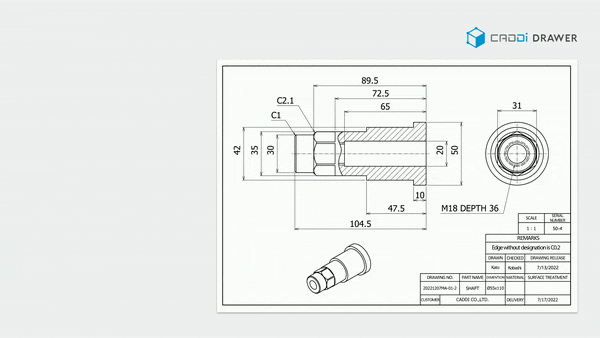
Efficient Data Management: By centralizing drawing data, CADDi Drawer simplifies access to vital information, enabling procurement teams to make informed decisions quickly and efficiently.

Improved Cost Management: The platform facilitates cost reductions through drawing similarity search and keyword search features, leveraging historical data and analytics to optimize spending.
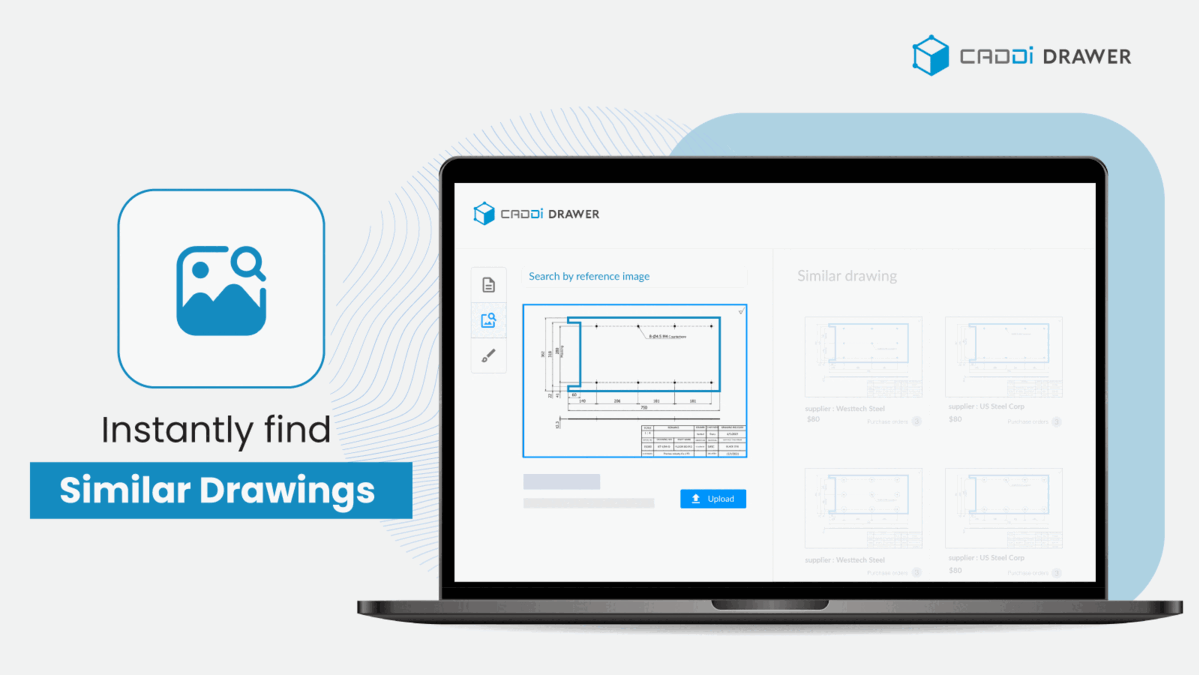
As the procurement landscape continues to evolve, tools like CADDi Drawer represent the future of procurement in manufacturing, offering solutions that not only address current challenges but also pave the way for new efficiencies and improvements. By embracing these innovations, companies can enhance their procurement processes, reduce costs, and improve supply chain resilience, positioning themselves for success in the competitive manufacturing sector.
Manufacturers of industrial machinery and equipment, such as Ebara, are actively utilizing these features of CADDi Drawer to successfully enhance their procurement process.
The procurement process in manufacturing is incredibly complex and involves numerous steps. Its specifics can vary significantly depending on the business model, production type, and regional business practices, leading to a high degree of uniqueness across industries and companies. Therefore, it’s difficult to discuss the procurement process as a uniform concept.
However, the value of extracting its essence and turning it into usable knowledge should not be underestimated. By understanding challenges in the procurement process and adopting strategic mitigation strategies, companies can position themselves for success now and in the future.
Diving into the Procurement Process:
Here’s a closer look at each of the ten steps in the procurement cycle:
- Need Identification: The first step involves recognizing a requirement within the organization. This could arise from a need for raw materials for production, machinery, or even maintenance services.
- Specification Development: Once the need is identified, detailed specifications for the required goods or services are developed. This includes the quantity, quality standards, and delivery timelines, which are crucial for aligning supplier offerings with company needs.
- Supplier Identification and Research: With specifications in hand, the procurement team searches for potential suppliers. This stage may involve market research, attending trade shows, or using digital platforms to find vendors capable of meeting the defined requirements.
- Solicitation of Bids or Proposals: Manufacturers often solicit bids or proposals from the identified suppliers. This can be done through Request for Proposal (RFP), Request for Quotation (RFQ), or Request for Information (RFI), depending on the complexity and value of the purchase.
- Evaluation and Selection: The received bids or proposals are evaluated based on criteria such as price, quality, delivery schedule, and the supplier’s ability to meet the specifications. This step may also involve negotiations to refine pricing, terms, and conditions.
- Purchase Order Process: Once a supplier is selected, a purchase order (PO) is issued, detailing the agreement between the manufacturer and the supplier. The PO serves as a legally binding document specifying the goods or services, quantities, agreed-upon prices, and payment terms.
- Delivery and Inspection: Upon receiving the ordered goods or services, they are inspected to ensure they meet the specified quality standards and requirements. Any discrepancies or issues are addressed directly with the supplier.
- Invoice Approval and Payment: After confirming the goods or services meet the specifications, the procurement team approves the supplier’s invoice for payment. The payment terms, such as net 30 or net 60 days, are typically agreed upon during the negotiation phase.
- Record Keeping: Accurate records of all procurement transactions, including bids, contracts, purchase orders, and receipts, are maintained for future reference and compliance purposes.
- Supplier Performance Evaluation: Finally, the supplier’s performance is evaluated based on criteria like product quality, delivery punctuality, and responsiveness. This feedback is crucial for future procurement activities and may influence the continuation of the relationship with the supplier.
Challenges in the Procurement Process
Procurement can be rife with disruptions, leading to extended lead times for end customers, reduced profits, and harmed competitive advantage. Here are some of the most common challenges when buying:
Supplier Management: Managing a diverse supplier base can be complex, with challenges ranging from quality control to meeting delivery deadlines. Mismanagement can lead to production delays and increased operational costs.
Cost Control: Fluctuating material costs and unexpected expenses can make it difficult to manage budgets effectively, impacting profitability.
Risk Management: Global supply chains are vulnerable to various risks, including geopolitical tensions, natural disasters, and pandemics, which can lead to supply disruptions.
Technological Integration: Keeping up with digital transformation in procurement processes can be challenging for companies with legacy systems.
Mitigating Procurement Challenges
It is integral to apply best practices throughout the procurement process in order to reduce disruptions and improve the health of the organization. See below for tips to minimize these issues:
Strategic Supplier Relationship Management: Building strong, strategic relationships with key suppliers can enhance collaboration, improve quality, and ensure more reliable supply chains. Regular communication and partnership-building activities can foster mutual understanding and alignment of business goals.
Leveraging Technology: Digital tools and platforms can streamline procurement processes, from supplier selection to order management and payment processing. Technologies like AI and blockchain offer innovative ways to manage contracts, perform risk management, and improve transparency.
Adopting a Total Cost of Ownership (TCO) Approach: Beyond just looking at the purchase price, considering the TCO for procured materials—including shipping, handling, and maintenance costs—can provide a more accurate picture of expenses and help identify areas for cost savings.
Risk Assessment and Contingency Planning: Conducting regular risk assessments and developing contingency plans for critical supply chain disruptions can minimize the impact of unforeseen events.
The Future of Procurement
The future of procurement in manufacturing is poised for significant transformation, driven by technological advancements and changing global dynamics. Digitalization will continue to play a pivotal role, with AI, machine learning, and blockchain technologies automating and enhancing procurement processes. Sustainability will also become a key consideration, as companies increasingly prioritize eco-friendly materials and practices to meet regulatory requirements and consumer expectations. Additionally, the shift towards more localized supply chains could mitigate some of the risks associated with global sourcing seen in the past years.
As procurement evolves, the ability to adapt to these changes while maintaining efficiency, cost-effectiveness, and quality will be crucial for manufacturers looking to stay competitive.
Revolutionizing Procurement with CADDi Drawer
In the context of these evolving challenges and opportunities, tools like CADDi Drawer are becoming indispensable for modern manufacturing operations. CADDi Drawer is a cloud-based platform that utilizes advanced technologies to streamline the management and analysis of drawing data, offering a comprehensive solution for the procurement process. By utilizing AI, Drawer links costing information with the drawing, providing all of the design and procurement data in one click.
Key benefits of CADDi Drawer include:
Innovation in Procurement: With its advanced image analysis algorithm, CADDi Drawer transforms drawings into actionable insights, promoting continuous improvement and innovation in procurement practices.

Efficient Data Management: By centralizing drawing data, CADDi Drawer simplifies access to vital information, enabling procurement teams to make informed decisions quickly and efficiently.

Improved Cost Management: The platform facilitates cost reductions through drawing similarity search and keyword search features, leveraging historical data and analytics to optimize spending.

As the procurement landscape continues to evolve, tools like CADDi Drawer represent the future of procurement in manufacturing, offering solutions that not only address current challenges but also pave the way for new efficiencies and improvements. By embracing these innovations, companies can enhance their procurement processes, reduce costs, and improve supply chain resilience, positioning themselves for success in the competitive manufacturing sector.
Manufacturers of industrial machinery and equipment, such as Ebara, are actively utilizing these features of CADDi Drawer to successfully enhance their procurement process.
Ready to see CADDi Drawer in action? Get a personalized demo.
Subscribe to our Blog!
Related Resources
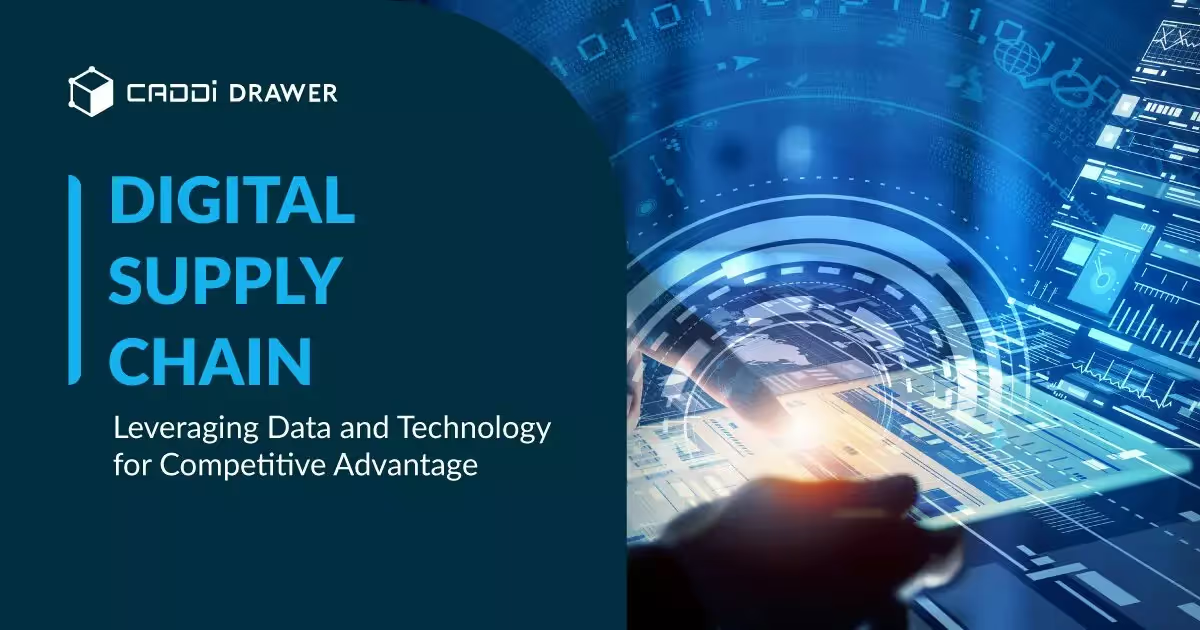

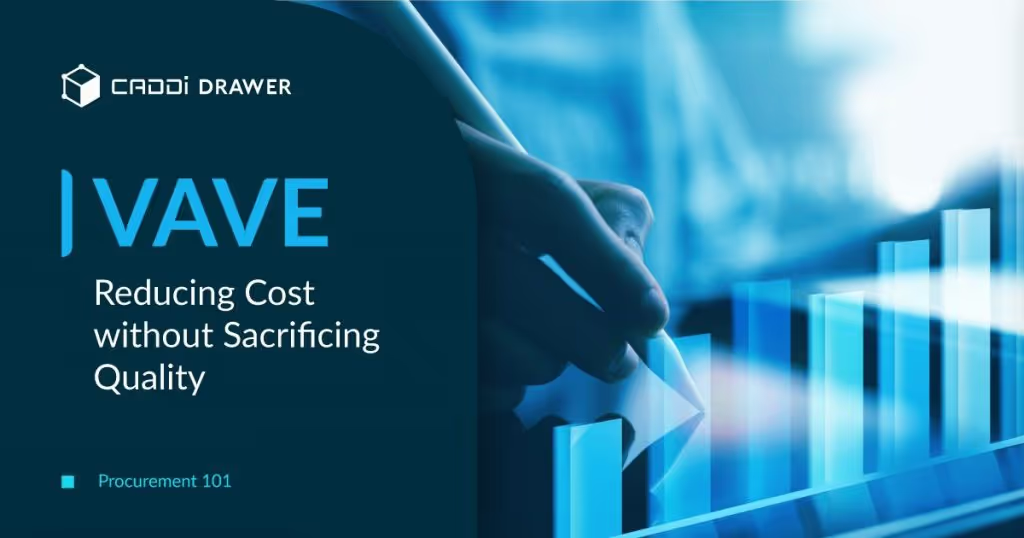

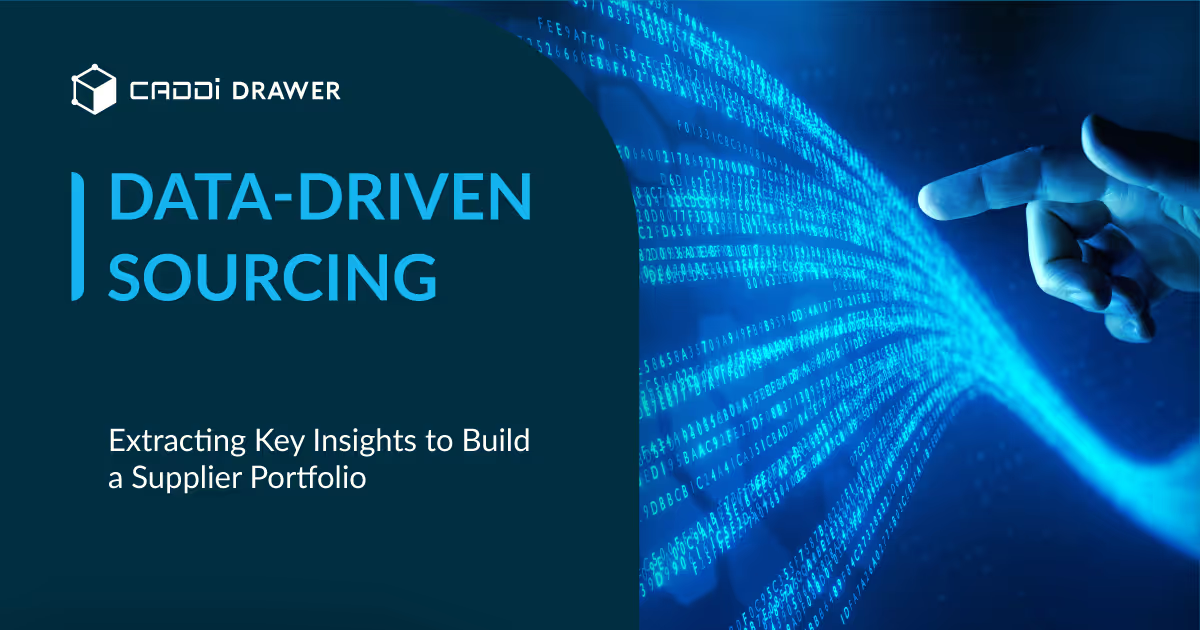





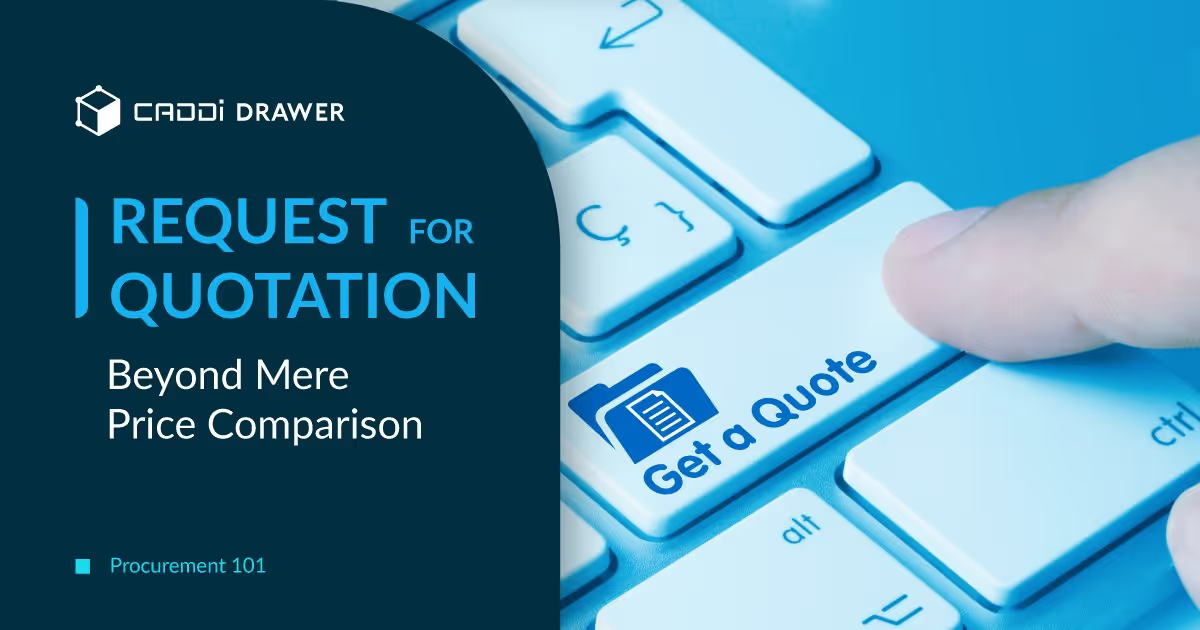

.svg)



.svg)
.svg)
.svg)


